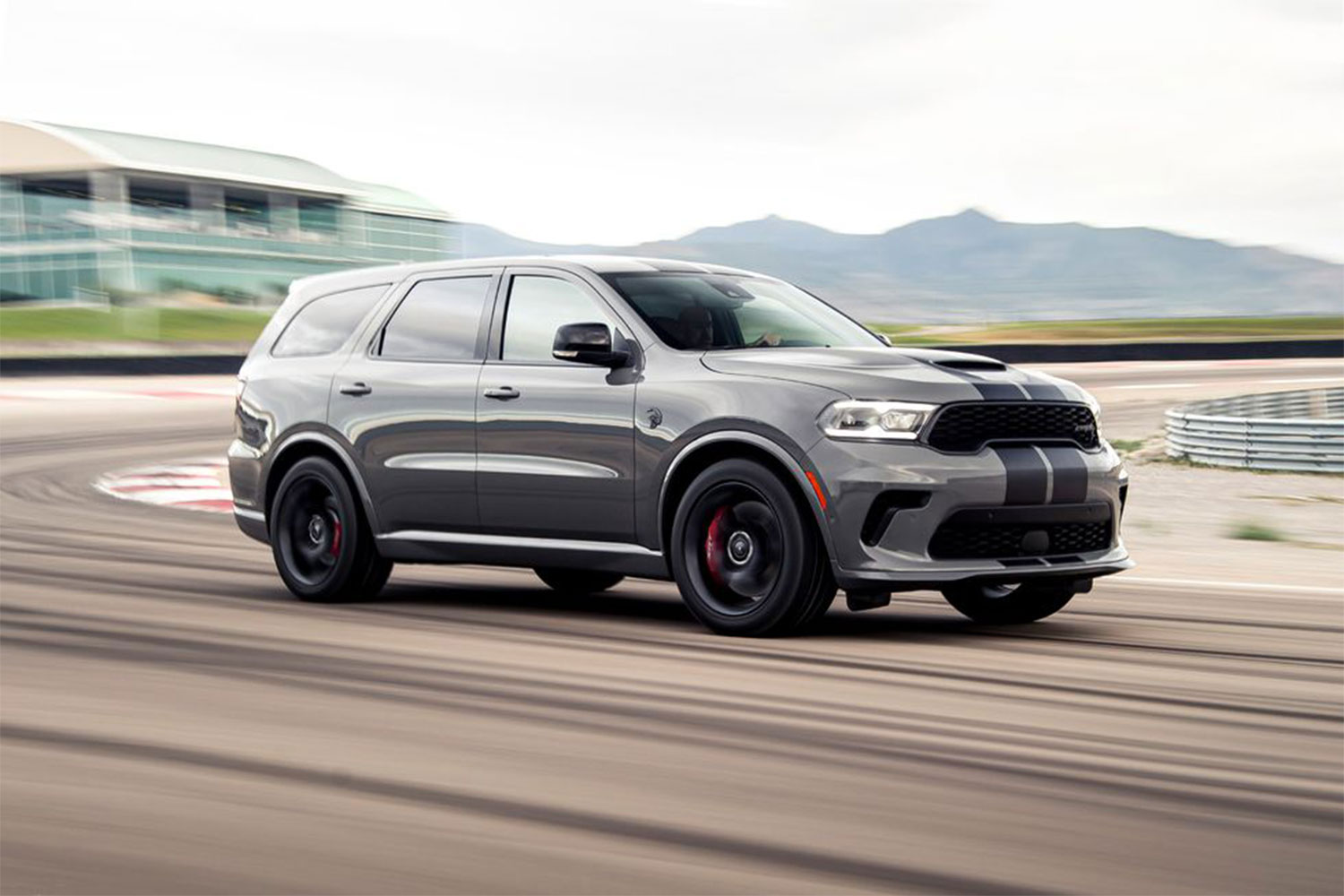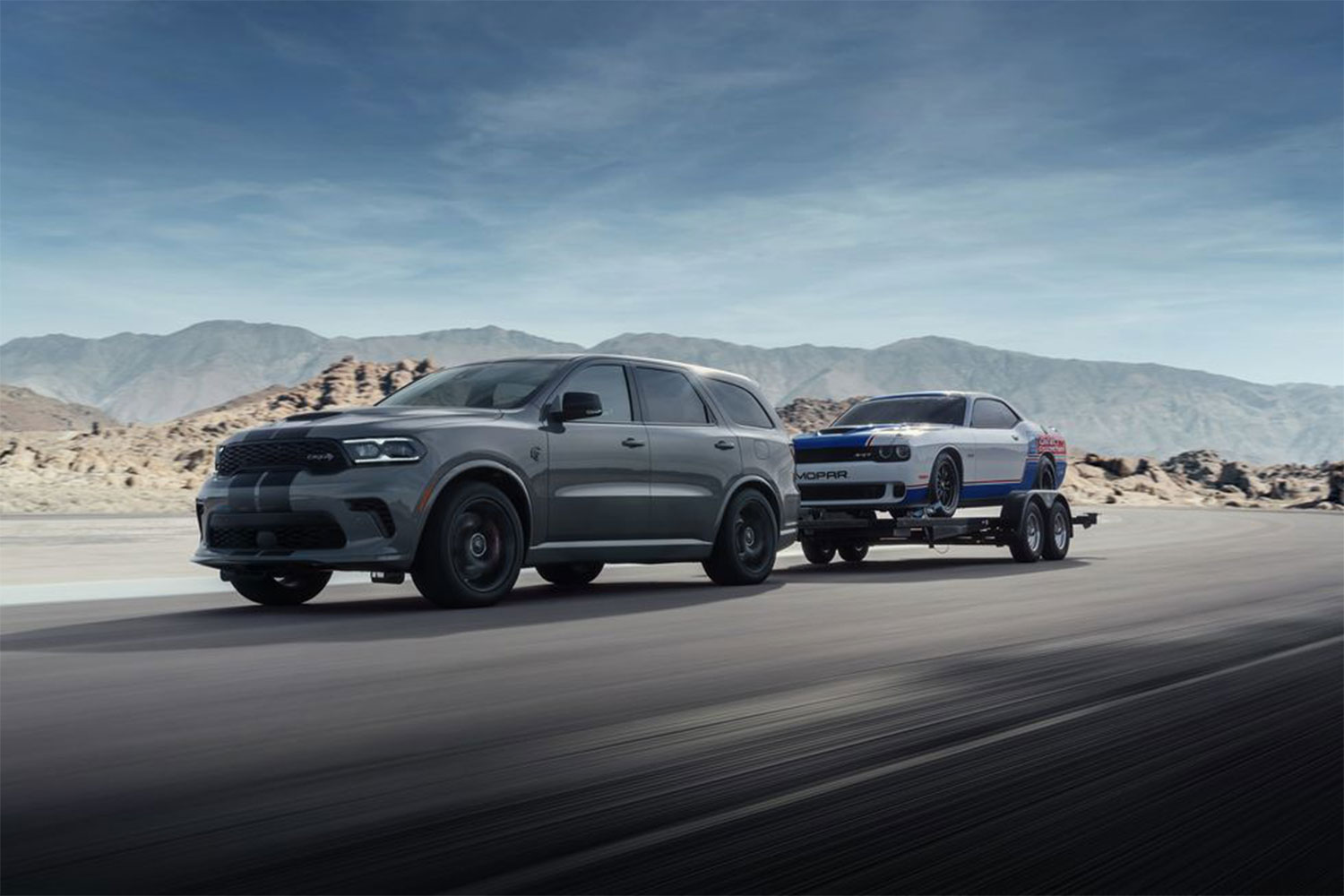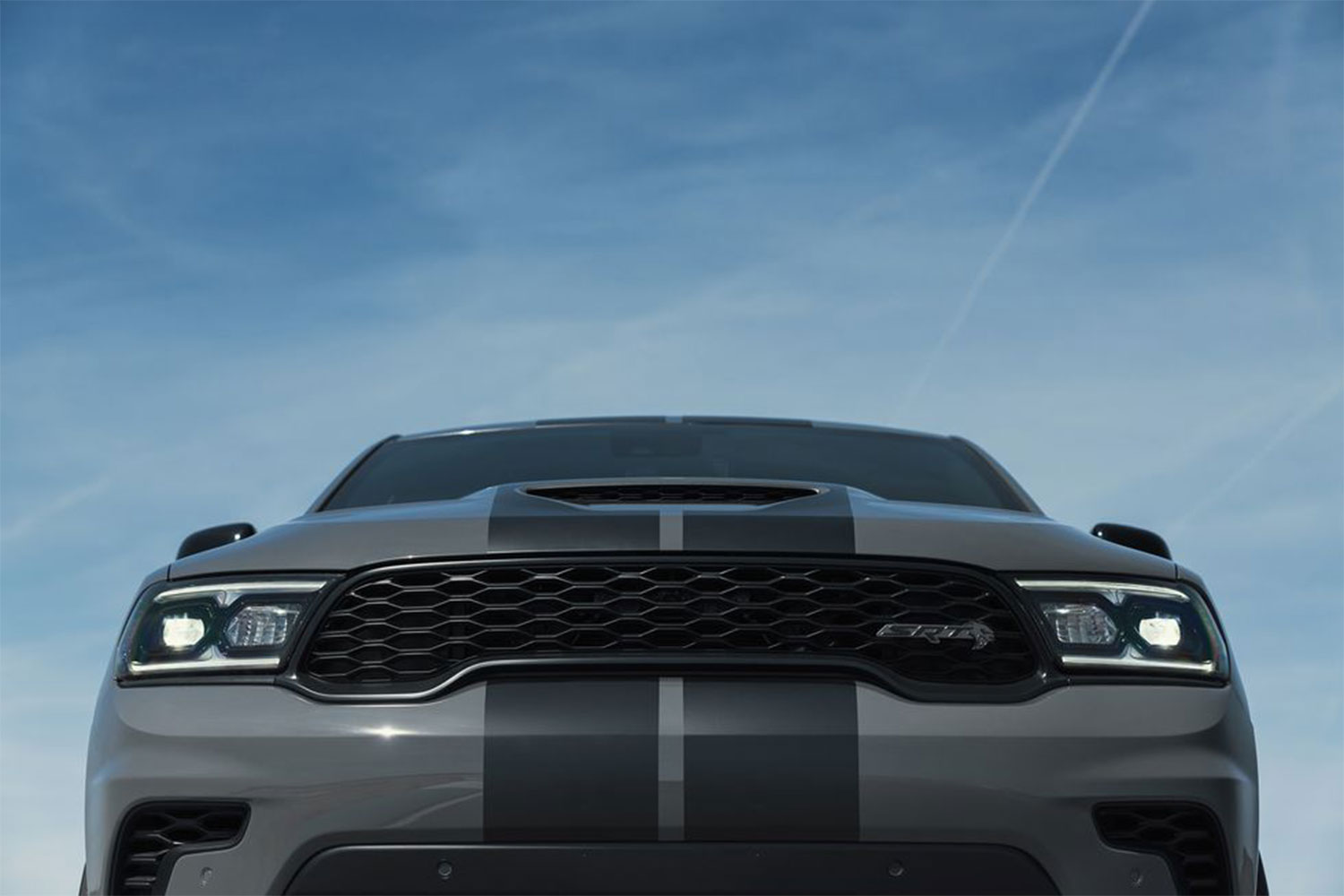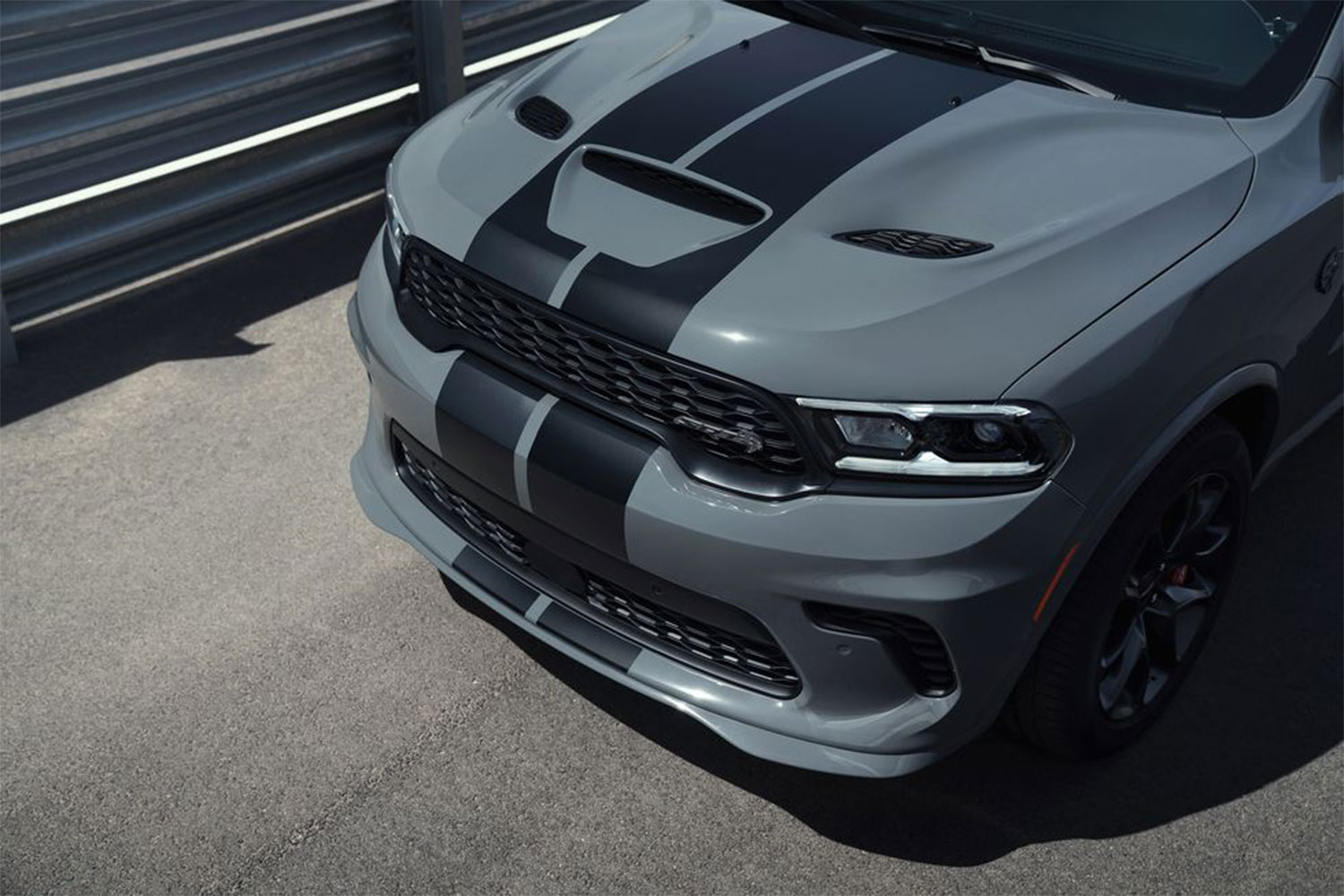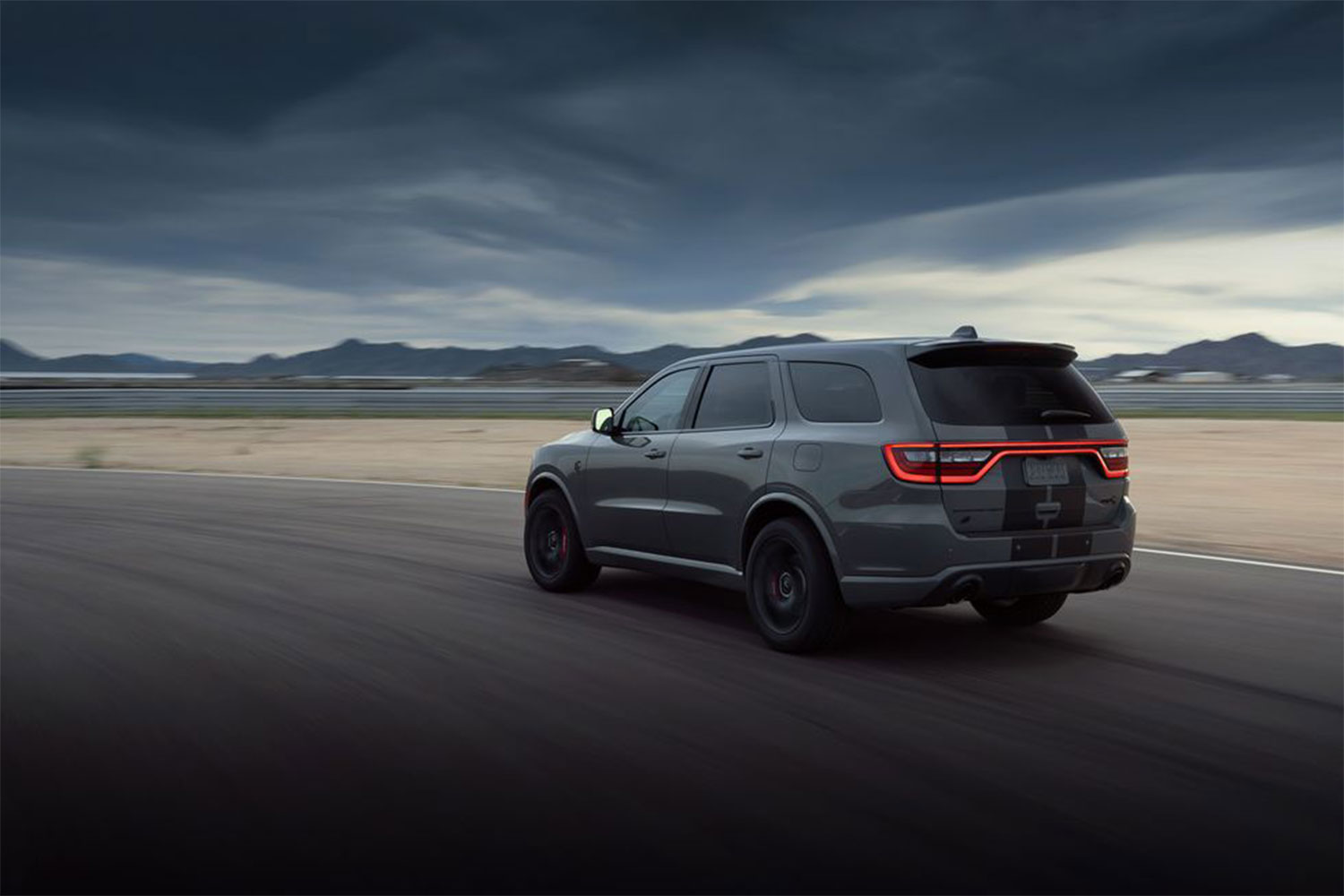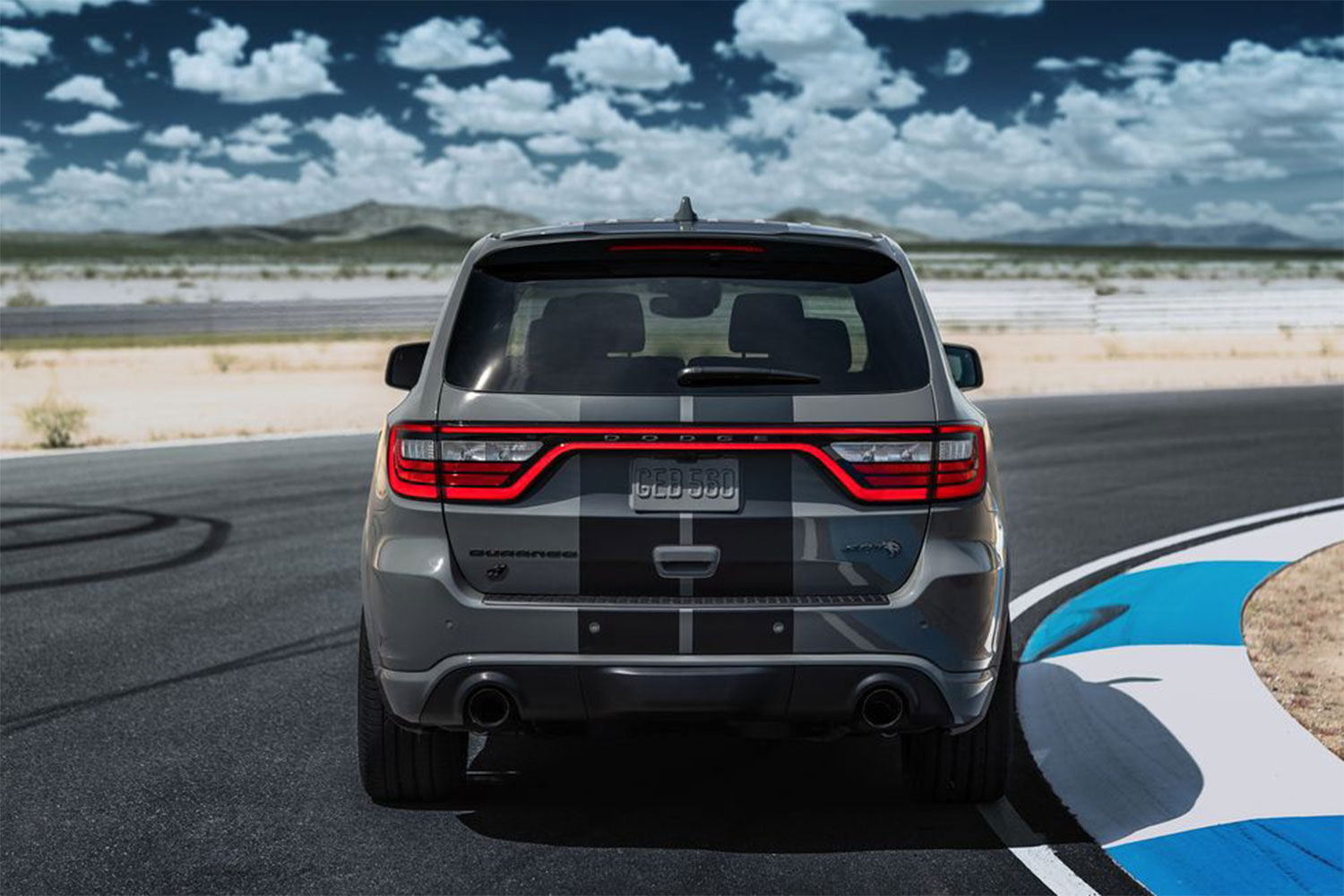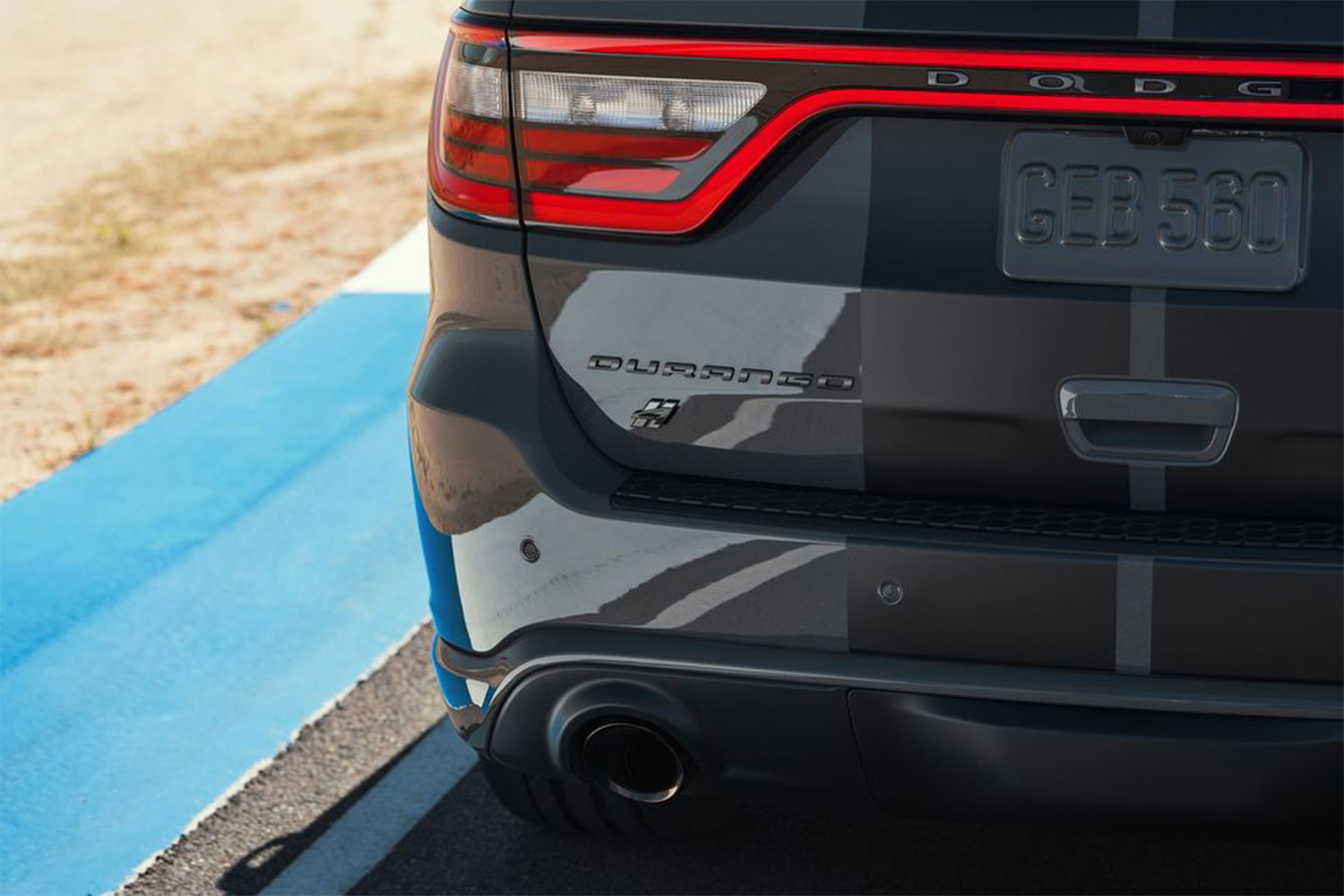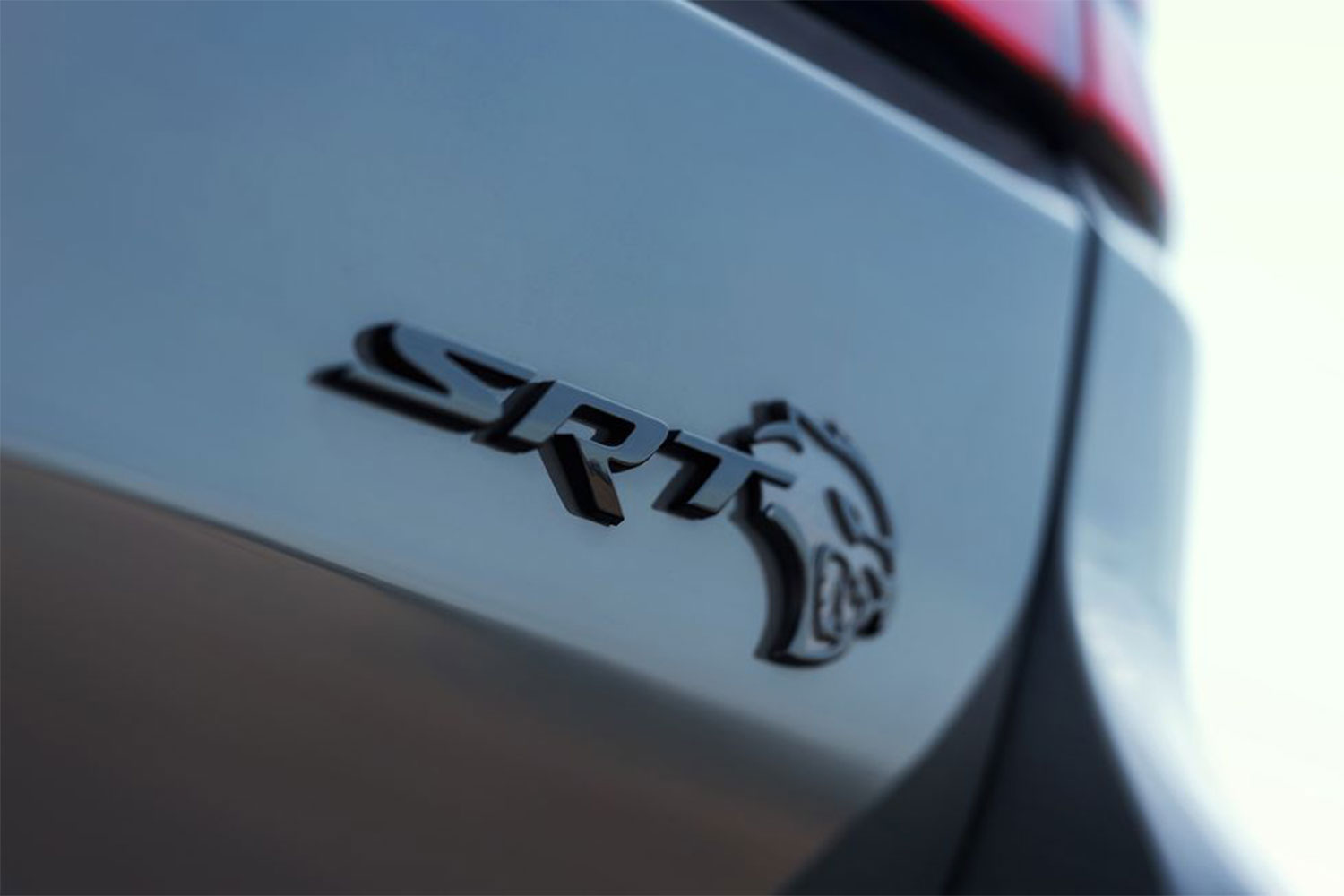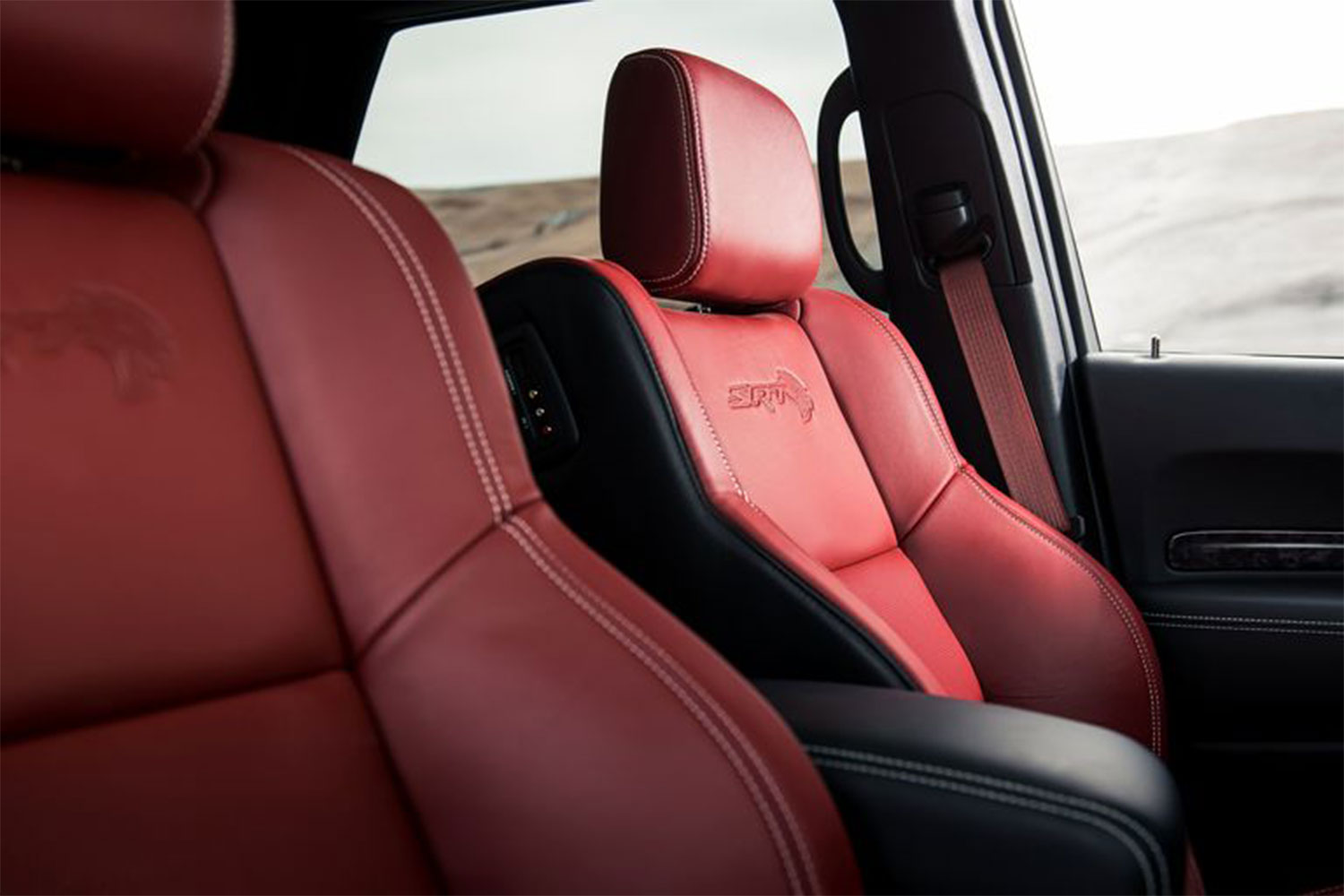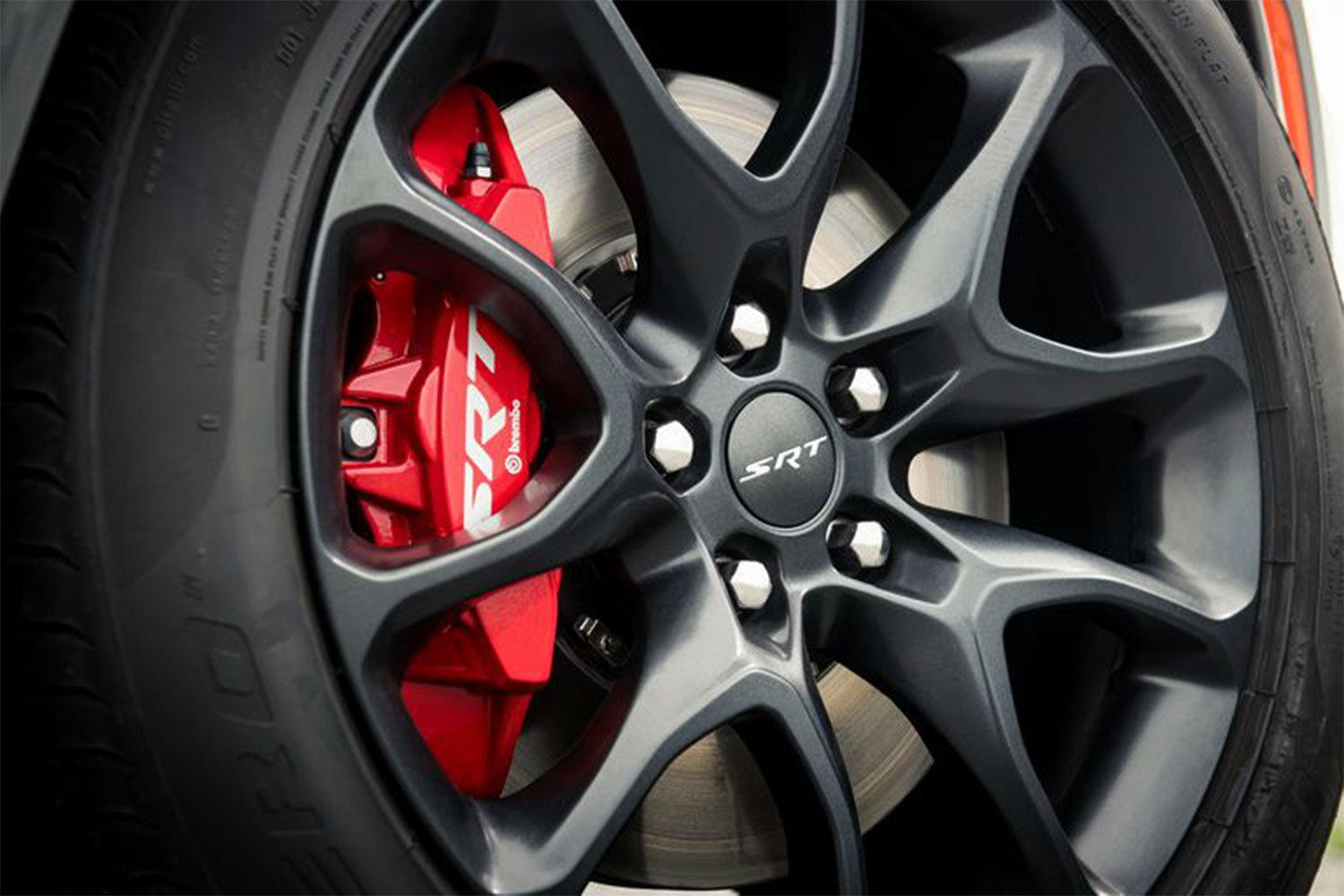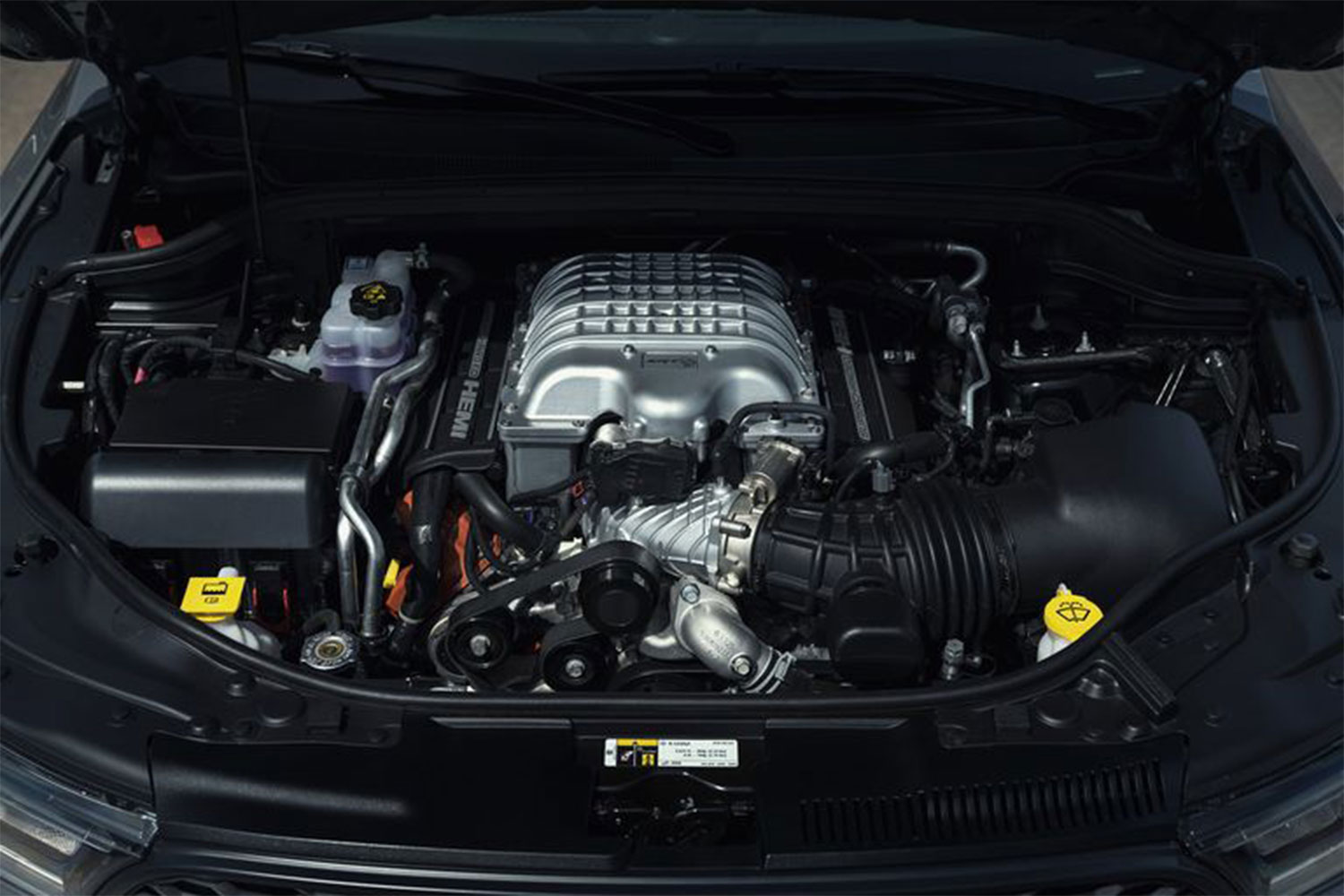After introducing the Dodge Challenger and Charger SRT Hellcat brothers for the 2015 model year, everyone wondered what other vehicles would be lucky enough to get the hellacious, supercharged 6.2-liter V8 engine. Despite the introduction of Widebody trims, the Hellcat Redeye, and the Jeep Grand Cherokee Trackhawk, we’ve still been yearning for a family-friendly vehicle with the bonkers engine. Seemingly answering our annual letters to Santa, Dodge recently rolled out the 710-horsepower Durango SRT Hellcat.

At the time, the original Challenger and Charger SRT Hellcats were in rarified territory, sitting among vehicles like the Ferrari F12, Porsche 918 Spyder, Pagani Huayra, and McLaren P1 for outright power. While we’ve seen Dodge increase the power of the engine to 808 horsepower with the Challenger SRT Demon, we’ve still been waiting for something crazy. It’s why we were so drawn to those Chrysler Pacifica SRT Hellcat drawings that made the rounds on the internet a few years ago. The Durango SRT Hellcat may not be as radical as a Pacifica SRT Hellcat, but it’s awfully close and there’s something hilarious about having a midsize SUV with the power output of a supercar.
So, what are the specs like? Under the SUV’s hood lies the familiar 6.2-liter supercharged Hemi V8. This time around, it’s good for 710 horsepower and 645 pound-feet of torque. The engine’s paired to an 8-speed automatic transmission and an all-wheel-drive system. Together, the combination results in a zero-to-60 mph time of 3.5 seconds. Seeing as how the lighter, two-row Grand Cherokee Trackhawk can complete the sprint in the same amount of time, we’re thoroughly impressed.
The Durango SRT Hellcat will pull all the way to 180 mph. And if you’re interested in drag racing the SUV, it will complete the quarter-mile in an NHRA-certified time of 11.5 seconds. Being a massive SUV with three rows of available seating, chances are a lot of Durango consumers are interested in towing. In that regard, the Hellcat-powered Durango will be able to haul 8,700 pounds.
Another crucial aspect of a Hellcat is the sound. Hellcat models can wake the dead and it will be the same case for the Durango SRT Hellcat. This time around, the SUV sports the largest X-pipe of any SRT model. That should give the SUV a special sound compared to other Hellcat models.
Ensuring the SUV puts its power down in a semi-usable way sees Dodge add adaptive Bilstein suspension, six-piston Brembo brakes, Pirelli Scorpion Zero all-season tires, and 20-inch wheels. Dodge is especially happy about the Durango SRT Hellcat’s braking performance, claiming the SUV only needs 116 feet to stop from a speed of 60 mph.
Of course, Dodge also upgraded the Durango’s exterior design to make sure it fits in with the rest of the Hellcat family. The SUV wears updated front and rear fascias, a prominent chin spoiler, and an enormous hood scoop. At the back, there’s a rear spoiler that reportedly makes 140 pounds of downforce at 180 mph. While it mostly looks cool, you can tell your friends that it’s fully functional!
Unique touches on the outside for the SRT Hellcat trim include red-accented gauges, Nappa leather upholstery with suede inserts for the front seats, and an embroidered Hellcat logo. Drivers get to look at a special steering wheel with red backlighting.
It’s taken a long, long time for Dodge to put the Hellcat engine in a family vehicle, but it won’t be offering the model for long. The 2021 Durango SRT Hellcat will only be offered for one model year. Sorry to be the bearer of bad news if you’ve been waiting for a three-row, Hellcat-powered SUV for a while. If you’re looking for someone to blame, direct your anger toward changing emissions requirements.
Dodge claims it will build all the units it can to meet customer demand, which is exactly what it should’ve done with all Hellcat-powered vehicles. Unlike nearly every other Hellcat model Dodge and Jeep sold (besides the Demon), limiting the Durango SRT Hellcat to the 2021 model year will make it a collector’s item in the future. Pumping out Challenger and Charger SRT Hellcat models made the high-performance vehicles ubiquitous. Anyone with enough money could buy one, which is why you can find pre-owned models of both on Autotrader for the mid-to-high $30,000s. Even with an expected price tag of around $80,000, that won’t happen for the Durango SRT Hellcat.
By Hellcatting the Durango, Dodge didn’t just create the most-powerful SUV ever, the automaker managed to make the most fitting modern-day muscle car. As with a lot of good things, it won’t last long. Better act fast.
